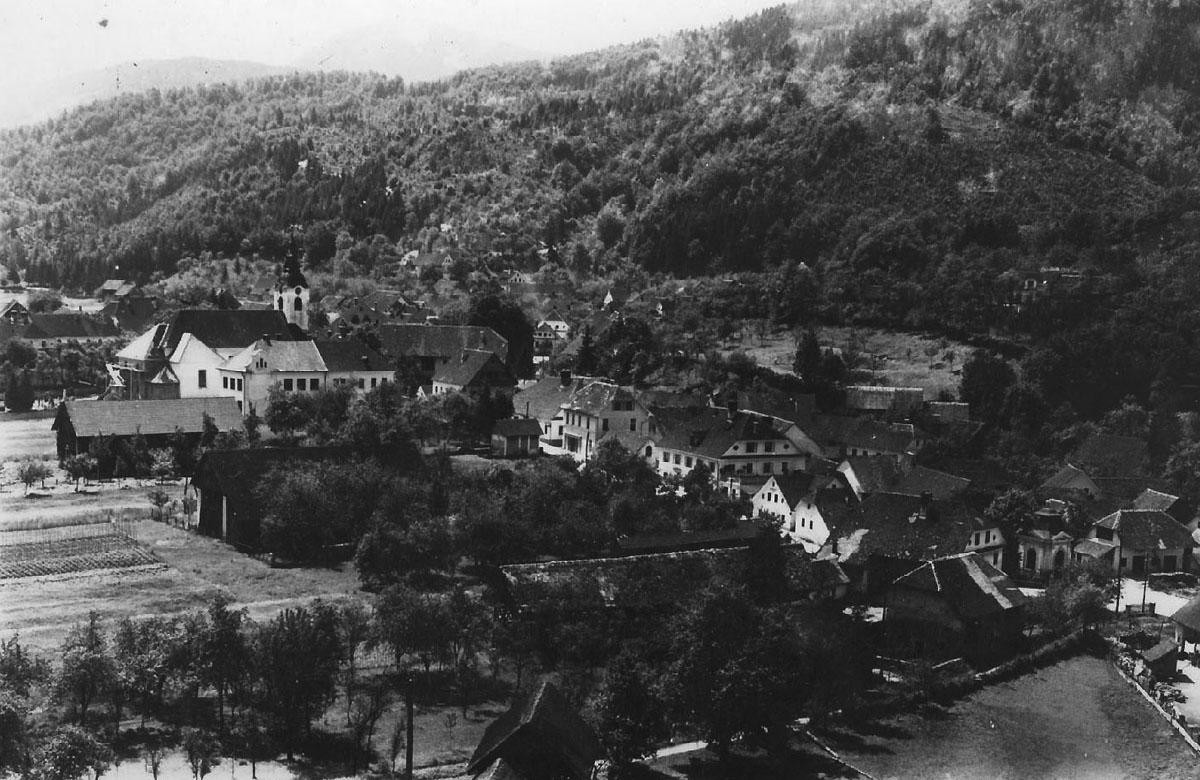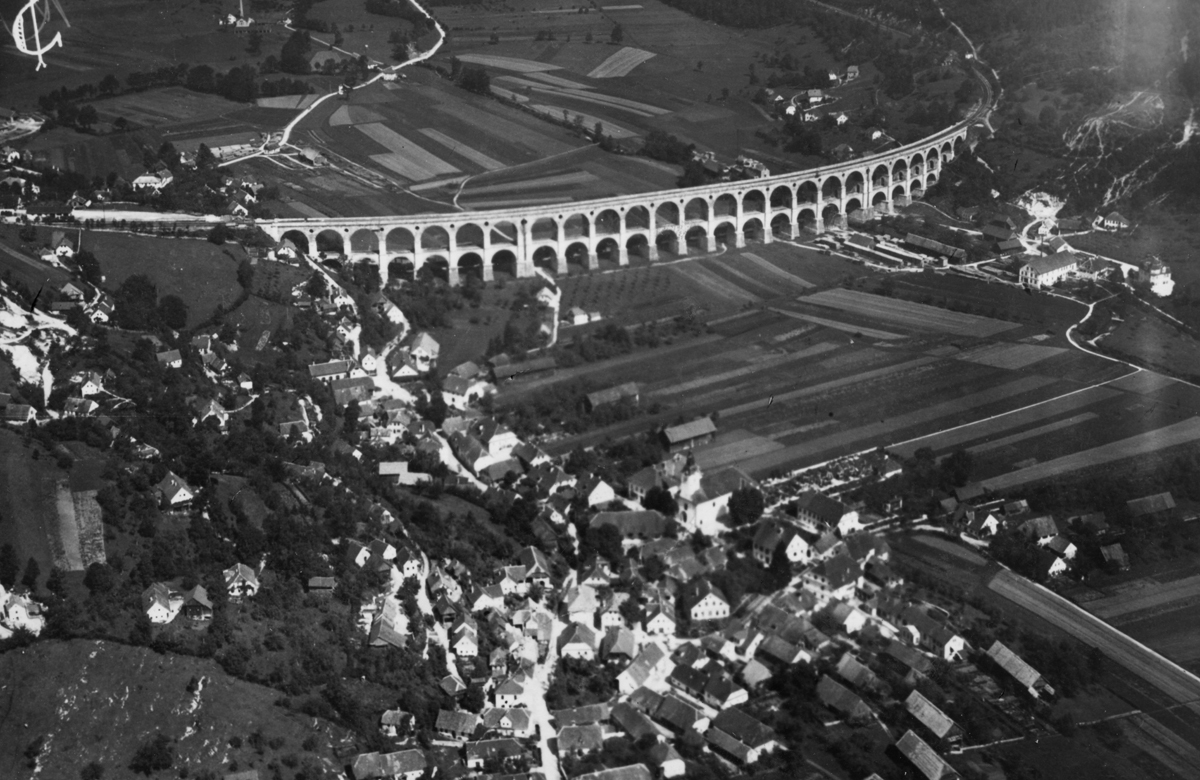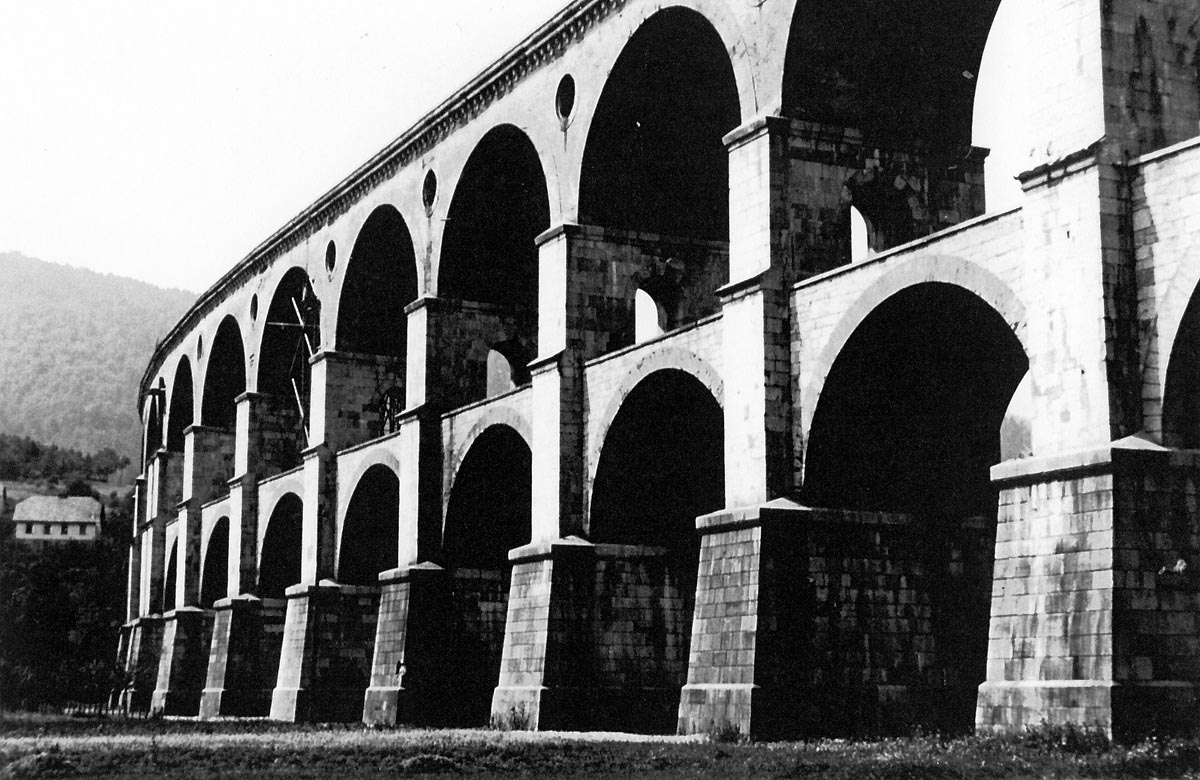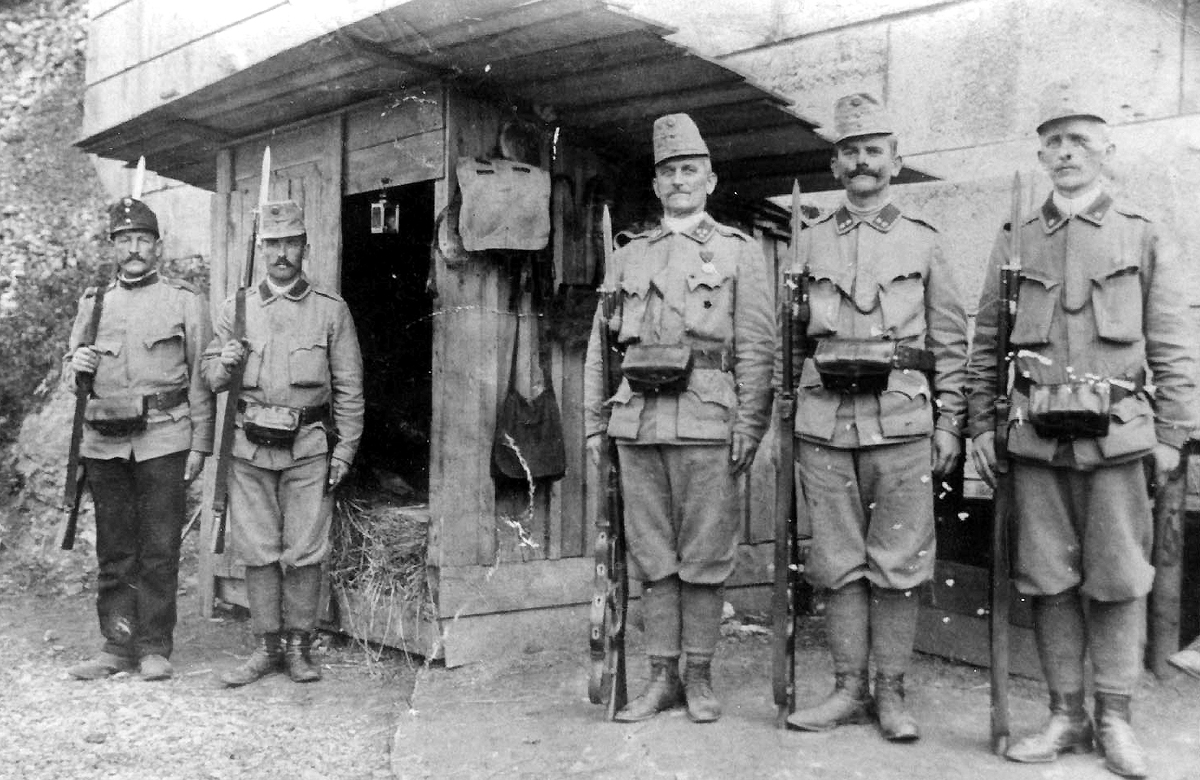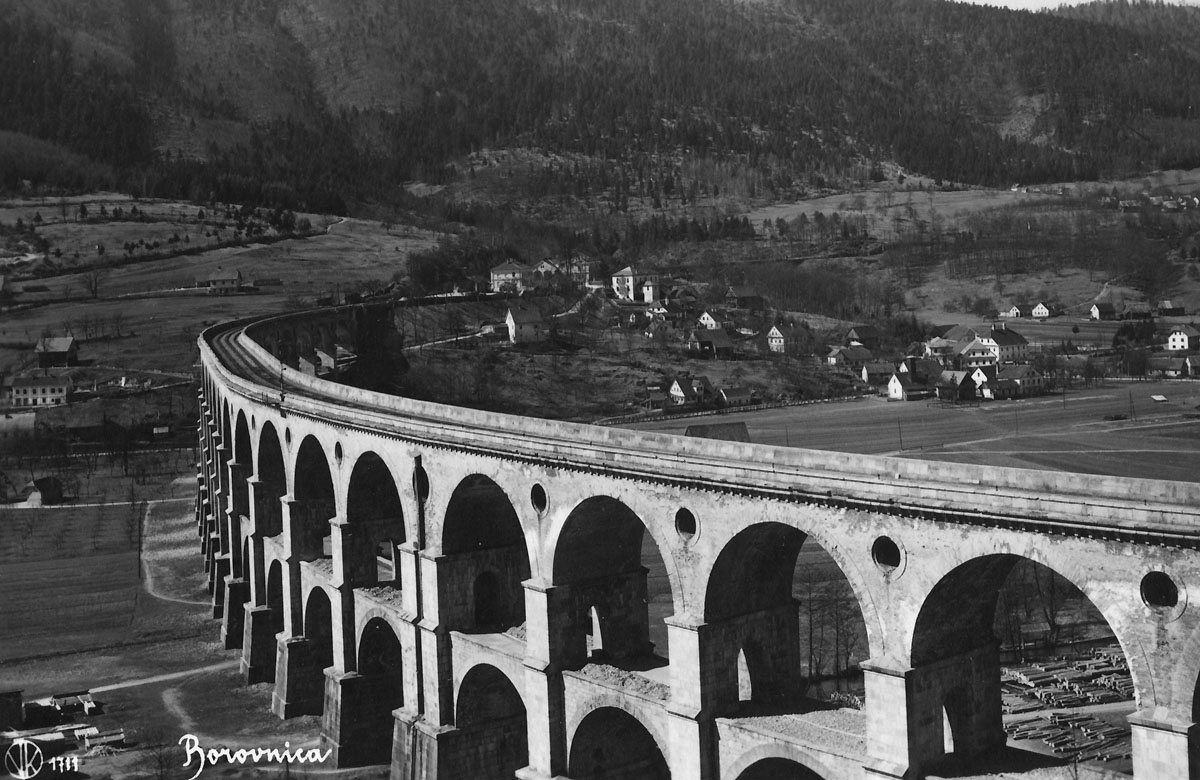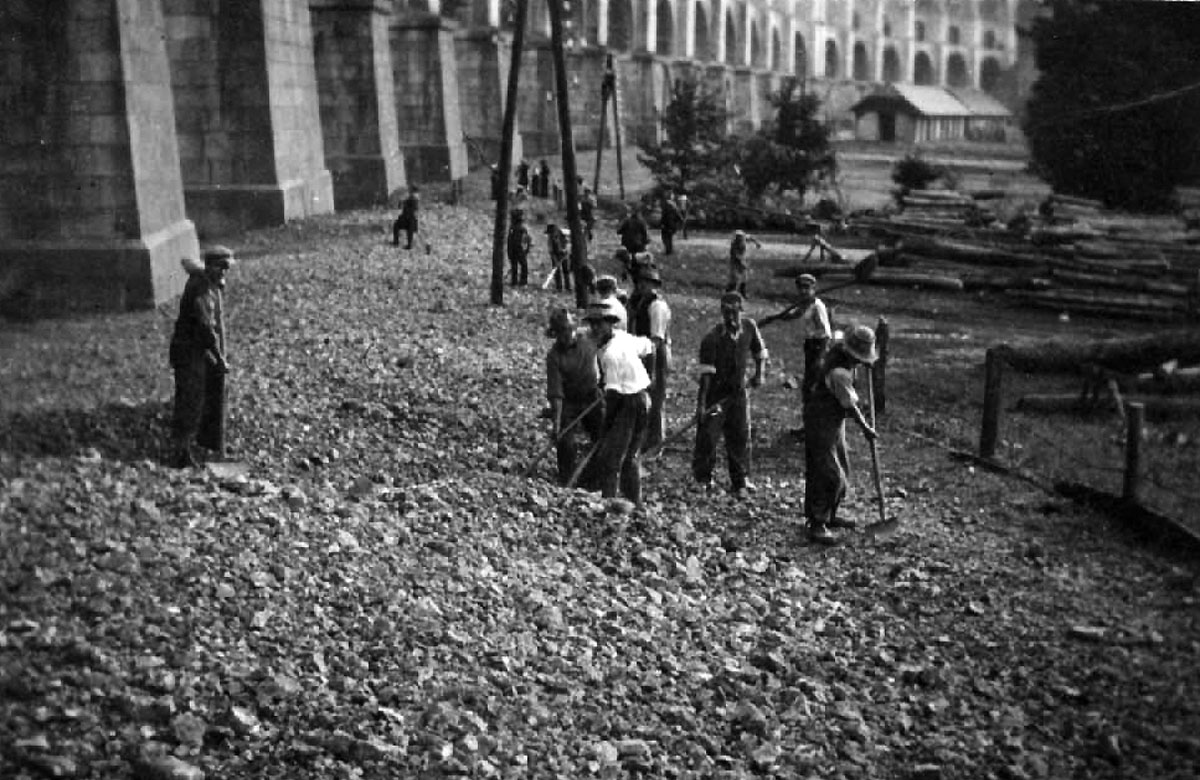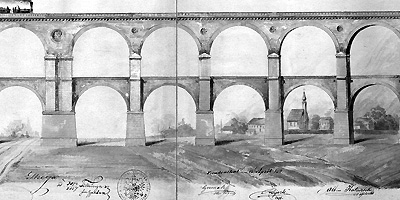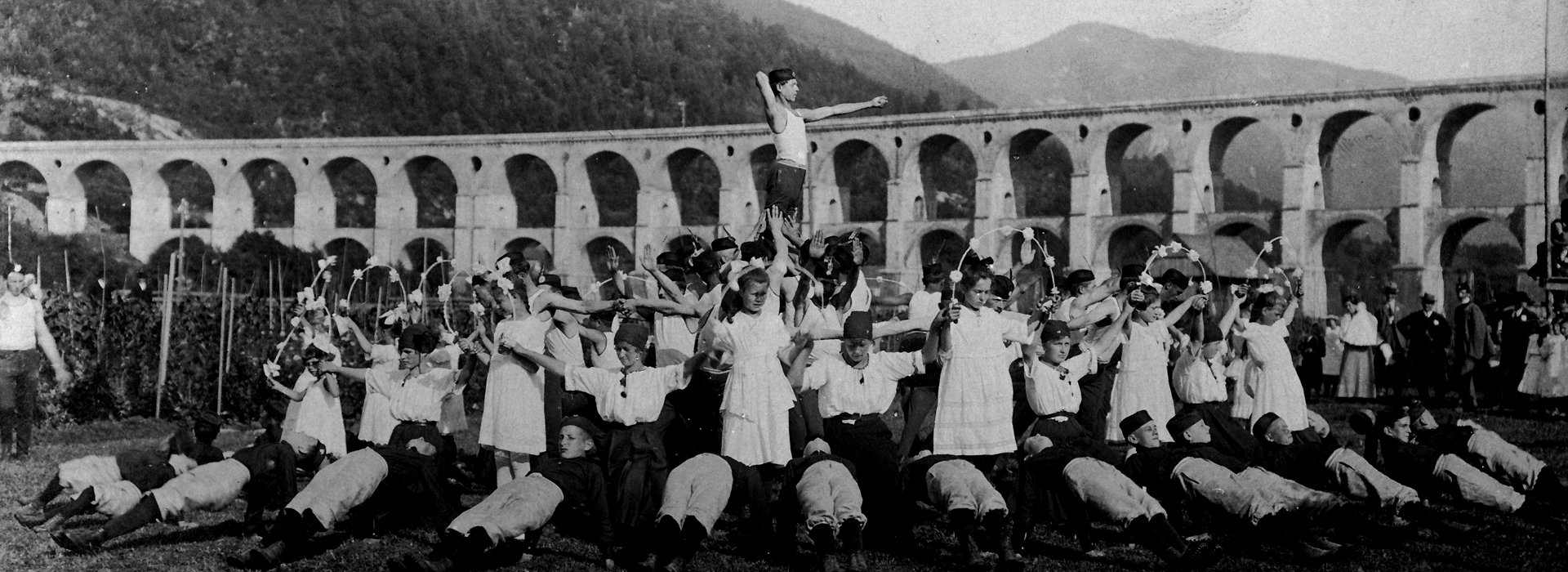
Borovnica railway viaduct 1850 – 1944
Beginnings of Viaduct Dilapidation
The railway line over the Borovnica and other viaducts was insulated with compacted clay. Although a drainage was made, water began seeping through the layer of clay over the years, and all the way to the brick arches. The upper layer was coated with asphalt only in 1905, which at least partially prevented intrusion of water into the Viaduct structure. Unfortunately, this intervention was too late. Water and frost had already started eroding brick arches. Moreover, traffic had also become denser over the years, with heavier and faster trains. As a result, vibrations had increasingly eroded the Viaduct’s upper structure. This was especially distinctive during the First World War, with trains loaded with heavy military equipment driving across the Viaduct towards the front. Given the proximity of the front and the importance of railway connections during the war, the Borovnica Viaduct was guarded by black soldiers during the First World War. These were military units comprising men too old or too young for the front. They performed rear-guard activities, especially the protection of important military facilities.
The Viaduct condition was clearly described in an article in Jutro newspaper in October 1939: “The vigilant eye of responsible actors in the line maintenance sections was not wrong; during various inspections of the structure and constant improvements and brick replacements, they found that the strength of the material inside the Viaduct structure weakened too much. Especially weak resistance was shown in the old wet brick located inside the arches, and the dry old building material was not much better. Investigations performed by local scientific institutes shown insufficient compressive strength in kg/cm2 compared to contemporary newly made bricks. Nevertheless, no one is up to the task of carrying out unimpeded train traffic over the arches, while thoroughly improving and replacing them at the same time. No attempt to protect specific affected parts of the arches with concrete seals has worked. They broke up and fell out. Oak wedges rot too quickly and they are not resistant to fill up the occurred gaps.
In addition to the said internal “diseases”, the Borovnica Viaduct also suffers from pain in its “legs”. Part of the truth has actually been written about by our newspapers. They exaggerated, however, when reported that the load-bearing columns were suffering from drying up of the Ljubljana Moors. Likewise, the claim that the oak piles sunken into the swamp bottom have given in or even rotted due to being between air and water is not entirely true. If it were for them, the bridge could have carried the heavy weight of fast trains for many years. The Viaduct bearing capacity primarily suffers from the dilapidated material right in the arches.
Experts therefore decided to divert the line between Preserje and Borovnica. It is necessary to avoid the passage from the Planina and Trebevnik hills over half a kilometre wide valley above the Borovniščica stream, and to run the line around the Borovnica village, so that the future planned route would pass to the tracks of the existing line near the current Borovnica Station, and further towards Verd, Logatec and Rakek.”
The Viaduct was the most worn out between the columns numbered 5 and 13. The brick arches, 120 cm thick, were rotten to a depth of 80 cm. The mortar in brick joints was completely washed away. They tried to repair damaged places by digging 50 cm deep holes in the arches and walled up the damage with new bricks and concrete. Special hanging scaffolding was made to enable hard and dangerous works on the arches of the upper Viaduct level at the height of up to 35 m. Masons worked on the scaffolding swinging severely due to a very strong wind sometimes blowing through the valley. There were also accidents when workers fell into the depths. A few of them ended in death.
The railway managers have of course tried their best to keep the Borovnica Viaduct in as good condition as possible. However, due to the Viaduct size, it was impossible to raise enough money for a serious renovation. On 27 April 1927, the Line Section sent to the Directorate of State Railways the following:
“In addition to our Report No. 1786-25 of 17 June 1926, and 22 December 1926, we are informing you that the relief arches keep collapsing. The opening in the arch at the seventh column has reached the size of 2.0 x 1.0 m; consequently, there is a danger for the whole arch to collapse, which would result in a rapid lowering of the track. What could follow that would be an unimaginable catastrophe. Therefore, we are asking to be immediately provided with at least 1,500 pieces of hard-burned brick (clinker) and at least 500 kg of cement, to help us in emergency. The situation is extremely serious; therefore, we would appreciate an immediate answer as to whether the Directorate will do anything or not, because otherwise, we will have to buy the most urgent material regardless of regulations: we cannot wait for another accident to open the door to repairs, which are absolutely necessary now. The above request concerns only the most urgent repairs. However, this does not delay our request to help us take a loan, so that we can start definite repairs of the main arches.”
In 1935, they started re-isolation of the upper structure of the line and completed the work in 1938. All in all, it did not help much. In August 1938, Viaduct vibrations were measured, and dangerous oscillations were found in the central part of the Viaduct while the train was running. Therefore, in the same year, the maximum speed of trains crossing the Viaduct was limited to 10 km/h, and the rails on it were welded up. At the same time, the groundwater level at some of the Viaduct columns was measured. With this purpose, they dug 15 m deep wells. The groundwater level ranged between 2 and 2.5 m below the ground; consequently, the upper piles under the columns foundations reached out of the water by up to 13 cm. In order to determine the exact composition of the soil at columns, the terrain was probed at a depth of 15 m in 1940. They found that the ground contained deposited alluvial sand, stones, and clay. In August 1938, a special commission led by engineer Maks Klodič conducted a commission inspection of the Viaduct’s condition. They made several proposals to rescue the Borovnica Viaduct. The first proposal envisaged the construction of a new viaduct next to the existing one; but this option was abandoned due to excessive costs of the construction, and the viaduct would have been rebuilt on a swampy territory, which would entail a possibility of sinking. Another variant, which was supported even by the authorities in Belgrade, envisaged the construction of a huge embankment instead of a viaduct. This embankment would have radically changed the look of the place, while it would not be much cheaper than a viaduct. The third proposal included a thorough rehabilitation of the Viaduct through raising the groundwater level by damming, and supporting the arches by walls or even replacing them. Due to remarkable technical requirements and high costs, this proposal was also abandoned. The fourth and at the same time the best solution proposed the construction of a bypass line from Preserje to Borovnica, and abandoning the Borovnica Viaduct.
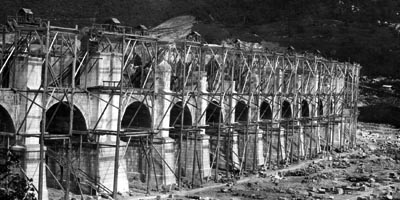
The Viaduct Construction
The Borovnica Viaduct used to be the largest bridging structure in the Southern Railway route between Vienna and Trieste…
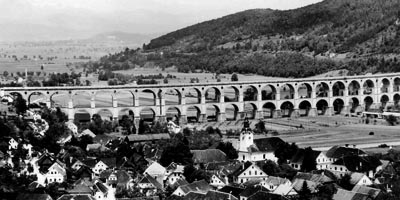
Borovnica
At that time, Borovnica, a small village in the southern part of the Ljubljana Moors, had about fifty houses…
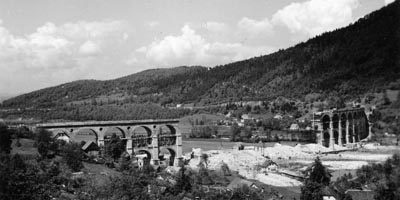
The Second World War
On Easter Thursday, 10 April 1941, at five o’clock p.m., the Borovnica Viaduct was blasted under the command of Captain Žužek…
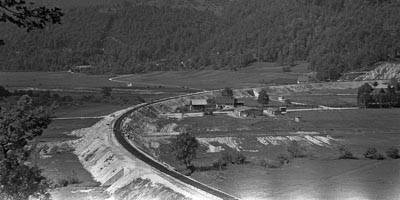
The construction of a new line
Borovnica was liberated on 6 May 1945, when it was entered by units of the 29th Herzegovina’s Strike Division…

This website is a part of the project »Thematic Park and Memorial Path of Borovnica Viaduct«, co-financed by the European Fund
for Regional Development (EFRD) throught the Local Action Group Barje z zaledjem.





